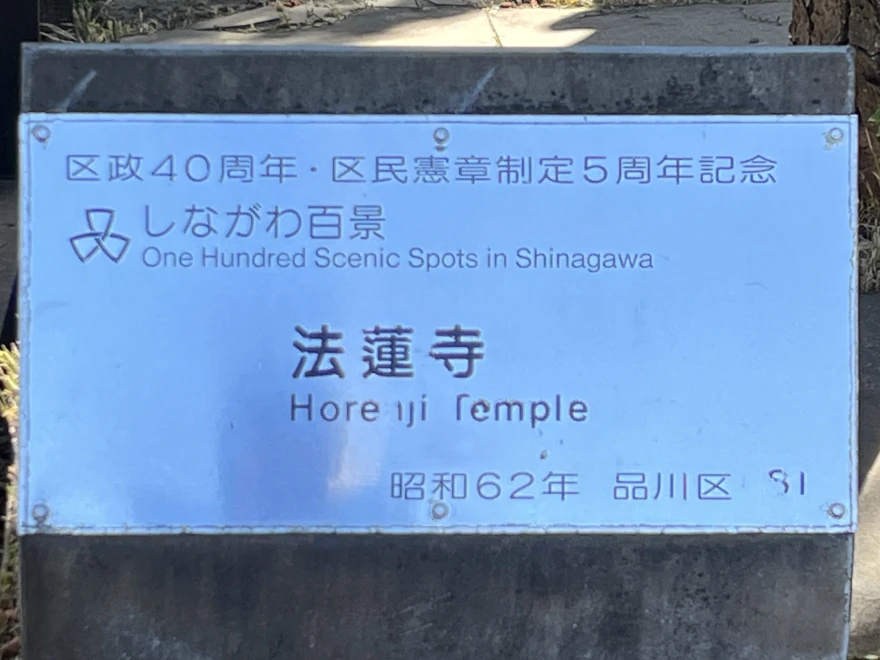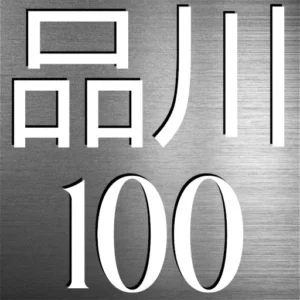⛩️ Hōrenji Temple – A Living Link to the Genji Legacy
📖 Hōrenji Temple’s Origins in the Kamakura Period
Hōrenji (法蓮寺) is a Nichiren Buddhist temple nestled in the Hatanodai area of Shinagawa. It was founded during the Bun’ei era (1264–1275) by Rōkei Shōnin (朗慶上人), the son of local lord Ebara Yoshimune (荏原義宗), who was said to be a descendant of the Minamoto clan. Rōkei became a disciple of Nichirō (日朗), one of Nichiren’s six senior disciples, and founded the temple on the Ebara estate.
Hōrenji (法蓮寺) is a Nichiren Buddhist temple nestled in the Hatanodai area of Shinagawa. It was founded during the Bun’ei era (1264–1275) by Rōkei Shōnin (朗慶上人), the son of local lord Ebara Yoshimune (荏原義宗), who was said to be a descendant of the Minamoto clan (源氏, also known as Genji)[1]. Rōkei became a disciple of Nichirō (日朗), one of Nichiren’s six senior disciples, and founded the temple on the Ebara estate.
[1] The Minamoto clan (源氏, *Genji*) was one of the most prominent warrior lineages of Japan, descended from imperial princes. The term “Genji” is an alternate reading of the same kanji and is commonly used in classical literature and historical contexts to refer to this lineage. Hōrenji’s foundation by a supposed Genji descendant ties it to the spiritual and cultural legacy of the samurai age.
🛕 A Temple and Its Neighbour: Hatagaoka Hachiman Shrine
Hōrenji Temple was built adjacent to what would become Hatagaoka Hachiman Shrine (旗岡八幡神社). For centuries, the temple served as the shrine’s bettō (caretaker temple), a common practice during Japan’s era of Shinbutsu-shūgō (the syncretism of Shinto and Buddhism). Their shared founding story and intertwined religious duties remain a local legacy, and their proximity allows visitors to explore both sites easily.
🏹 Edo Period Prominence
During the Edo period, the temple was favored by members of the Tokugawa shogunate. Tokugawa Ienari (徳川家斉), the 11th shogun, is said to have rested here during falconry trips. The 39th head priest, Nissen (日詮), was also highly respected and gained popularity within Edo Castle’s inner chambers.
🔥 Destruction and Rebirth
Tragically, the temple’s original buildings were destroyed during the US’s 1945 Tokyo air raids. However, it was rebuilt soon after. The current Main Hall dates from 1966, with further additions including a Guest Hall built in 1990. The temple complex today includes these rebuilt structures and commemorative stones documenting its resilience and history.
🎉 Hōrenji Temple – Alive with Tradition
Hōrenji remains active today with seasonal events and community services. The highlight is the annual Mandō Procession (万灯行列) in October, when lantern-bearing participants parade through the streets in a brilliant display of faith. The temple also enshrines Ebisu (恵比寿), the god of prosperity, as part of the Ebara Shichifukujin (荏原七福神) pilgrimage circuit during New Year celebrations.
🌀 Hōrenji Temple Details
- Sect: Nichiren-shū (日蓮宗)
- Founded: 1260s by Rōkei Shōnin (朗慶上人)
- Historical Role: Bettō temple to Hatagaoka Hachiman Shrine
- Annual Events: Mandō Parade (October), New Year’s Ebisu worship
- Notable Guests: Tokugawa Ienari, Edo Castle officials
The temple’s grounds also include a peaceful garden, stone monuments, and wooden architecture that reflect its deep historical roots and modern community role.
🧭 Hōrenji Visitor Information
Address: 3-6-18 Hatanodai, Shinagawa-ku, Tokyo 142-0064
Best season: October (Mandō Festival), New Year (Shichifukujin pilgrimage)
Admission: Free
Official Info: www.hourenji.or.jp
Note: Please be respectful of active services. Photography may be restricted during ceremonies.
Where is it?
| what3words | ///closes.exacted.veered |
| latitude longitude | 35.604045, 139.708217 |
| Nearest station(s) | Ebaramachi Station (Tokyu Oimachi Line) |
| Nearest public conveniences | Inside the temple, the station or nearby convenience stores |
Show me a sign.

The sign is at the temple entrance on the left behind the gate.
Withervee says…
Hōrenji’s layered history and quiet presence make it a powerful complement to its neighboring shrine. Visit during the lantern-lit mandō procession for the full effect.
Site Character
- Historical Significance 歴史 (Rekishi): ✔️
- Spiritual Significance 霊性 (Reisei): ✔️
- Lifestyle 生活 (Seikatsu): ✔️
- Atmosphere/Natural Features 風土 (Fūdo): ✔️
- Hidden Gem 隠れ家 (Kakurega): ✔️
Who in their right mind would vote for this?
- Local (Nichiren-shū) Buddhists
- Lantern-lovers
- Postwar architecture fans
- Genji buffs
- Shichifukujin pilgrims
Further reading
Hōrenji Temple-Wikipedia (Japanese)
While you’re there…
Visit the conveniently located Hatagaoka Hachiman Shrine right next door.

